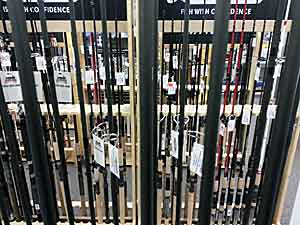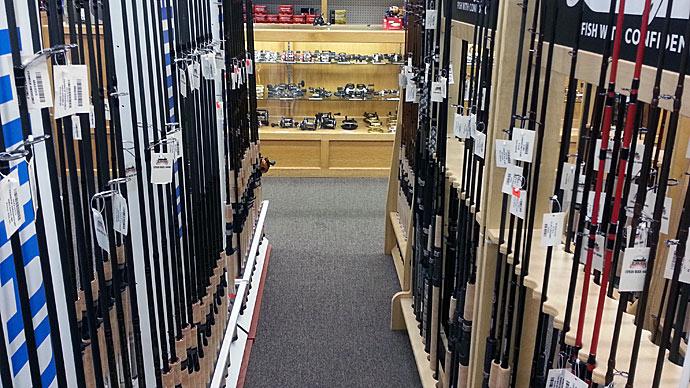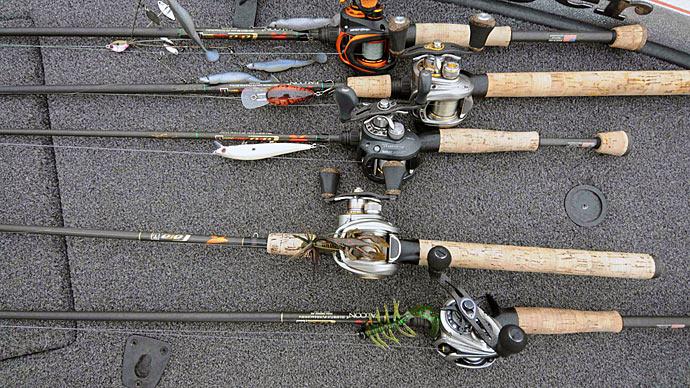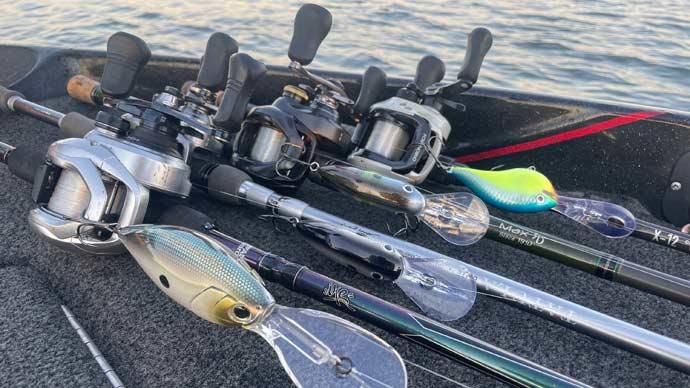
Believe me, nothing would please me more than to be able to find a great fishing rod at the local retail discount store for the price of $19.95. But the truth is, a quality rod can't be made for that price.
A bass rod worth buying must be light, durable, properly tapered with the right action, and have some parabolic characteristics designed specifically for the kind of bass fishing I'm doing.
The good news, however, is that an angler doesn't have to spend $300 to $400 in order to purchase the rod I just described. Today's fishing equipment is some of the finest that has ever been manufactured. And that includes modestly priced rods.
There are some incredible rods priced around $150 that are equal to the high-end luxury rods on the market, and they will definitely do anything the serious bass angler needs to get done.
Does that mean there isn't a place for high-priced rods? Far from it. For example, there are some big-ticket rods that have specific parabolic characteristics that will help a professional angler throw a large crankbait 80 to 90 yards. But those kinds of casting distances are only possible when the rod is paired up with an expert angler who knows how to load that rod up just right, so as to maximize that cast.
Let's be honest: for the additional cost, the vast majority of bass anglers don't need those extra few yards in every cast. Even the most seasoned fisherman has to ask if the parabolic advances that a high-end rod offers are worth tripling the cost. For most of us, the answer will be no.
When I first started fishing, a tendency among rod builders was to create a big, stiff rod and then add 8 inches of soft tip to it. They then called it a "premium" rod.
But a truly premium rod has some unique parabolic characteristics to it, which means it bends along the whole spine of the rod shaft, (from butt to tip), not just out on the end of the rod.
Today, the science of rod manufacturing has brought us incredible advances that have been designed into all quality rods. This is good news for bass anglers on a budget.
My advice to anglers is to buy a fishing rod based on your specific needs. And this is true for both the professional and weekend angler.
I struggled to find the perfect rod during my professional career. If I could find one that was light and properly tapered with the right action, it seemed to lack the stiffness needed when setting the hook on a big fish at the end of a long cast.
Strange as it sounds, the stiffness problem has gone away as a result of innovations in fishing lines.
When mono was the only line available, it stretched a great deal. That's why I always leaned toward a rod on the stiff side - to make up for the elasticity of the mono during the hook set.
But today, new breeds of high-tech lines like Berkley NanoFil, Fireline, and other super lines don't have any stretch, so we anglers are able to get away from needing a super stiff rod to drive the hook home.
There is another advantage to not having a really stiff rod, and it has to do with shock absorption.
Because my fishing career began with a personal preference for stiffer rods, I learned early to compensate for its lack of "give" by using my body as a shock absorber when fighting a big fish.
Out of years of habit, I still tend to use my arms and wrists to relieve some of the pressure a big fish always puts on my rod and line. This is not instinctive for most bass fishermen, who tend to stick the butt of the rod to their gut and winch them in.
But when a big fish suddenly dives deep at the boat, there needs to be some shock absorption built in, or the fish will break off. Even those trained to use their wrists and arms as shock absorbers benefit by using a well-designed rod that has additional "give" built-in. Sadly, back in the day, these rods were not available.
For example, when deep cranking caught on decades ago, everyone turned to flipping sticks to handle the heavier weight of the large crankbaits.
As you may know, a flipping stick is usually a 7'6" brute of a rod originally designed to flip or pitch into heavy cover and wrestle big fish out of the jungle. But we used flipping sticks because they were the only rods at the time that could handle the larger, heavier crankbaits.
The problem came when you got a big 7 to 8-pound bass near the boat. We typically were throwing light 10-pound test line to get the crank down deep enough, but our stiff rods provided very little give, and so a lot of big fish were lost in the final moments of the fight.
Today, there are plenty of decent bass rods with "give" built in - and the good news is that you don't have to spend $300 to $400 to get that. Even an angler on a budget can find a great rod that gets the job done.
At every seminar I give, someone inevitably pins me down and asks what rod I recommend. While I truly believe there are many fine-quality rods on the market today for around a hundred fifty dollars, I can say with confidence that Fenwick makes some great fishing rods. Their high modulus graphite blanks are combined with titanium frame guides with lightweight titanium inserts, and these rods are second to none.
Fenwick's high-end World-Class rods, (along with their awesome Elite Smallmouth rods), are exceptional buys, but I need to point out that their HMG rods are truly one of the best values on the market today.
The HMG costs around $150, and yet, for the money, it will do anything you need a rod to do. It's an awesome, awesome rod.
Regardless of the brand you buy, always buy a rod based on your specific needs. And now it can be done without having to spend a fortune.
Light-weight materials, strong graphite blanks with true parabolic design, high-tech guides, and superior craftsmanship are available today without having to go into debt. And when you're on a budget, that's good news.
For more articles, quick tips, and much more, visit HankParker.com.




